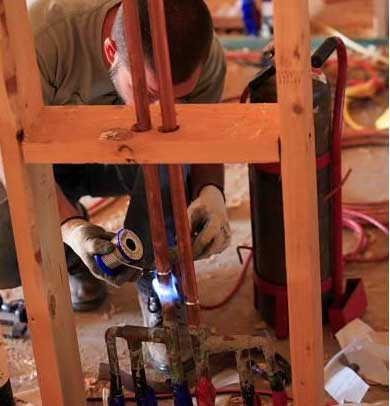Spot the Safety Violation: Hot Work & Housekeeping
Working with an open flame is always risky but this worker has increased the risk of a fire. What did he forget to do’

Keeping work areas clean isn’t just about neatness. Cleaning up the workplace also eliminates safety hazards. Here, the floor surrounding this worker is covered with wood chips and shavings, flammable material that could easily be ignited by the welding torch he’s using.
Solution: Good housekeeping practices in the workplace aren’t just intended to maintain a tidy appearance. Poor housekeeping has real safety implications. For example, not sweeping up wood chips leaves highly flammable material laying around where it could be ignited by an open flame or spark.
Other examples of how poor housekeeping can create safety hazards includes:
- Debris left on the ground can create trip-and-fall hazards.
- Floors that haven’t been cleaned to remove grease, oil and other substances can cause a worker to slip and fall.
- A buildup of combustible dust can lead to explosions and fires.
Download this model housekeeping checklist and use it to inspect your workplace and evaluate the effectiveness of your housekeeping practices.
Slips, trips and falls are some of the most common safety incidents caused by poor housekeeping. Download and use this slips, trips & falls inspection checklist to identify hazards that could cause workers to slip, trip or fall and document the actions you need to take to address the hazards identified.